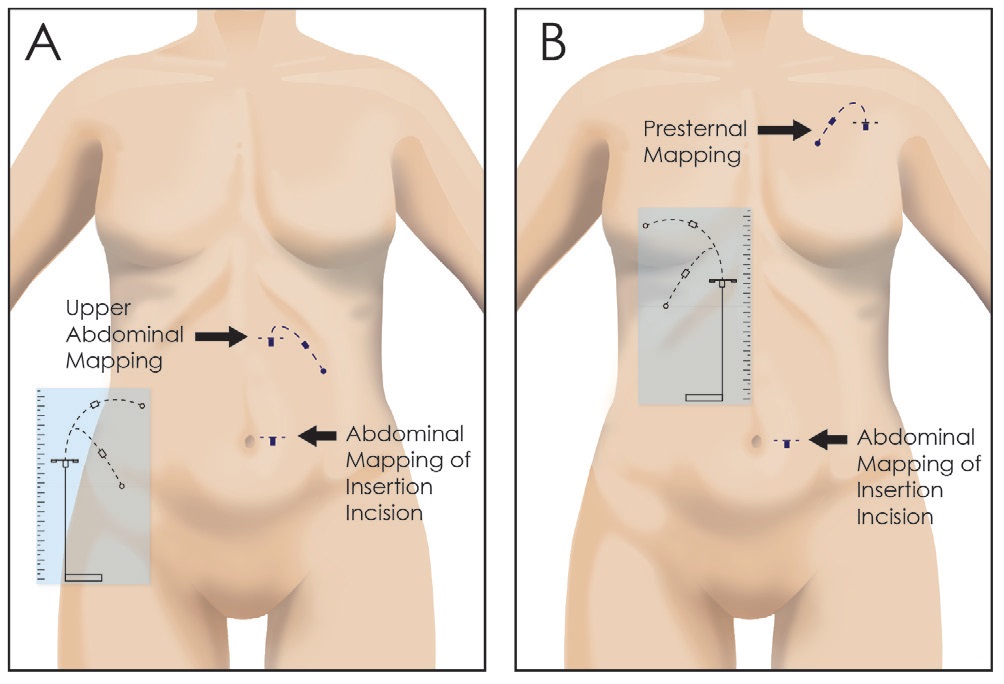Procedure Day Mapping

Figure 5A. For upper abdominal catheters, the stencil cutouts for the secondary incision, tunnel configuration, cuff positons, and exit-site location for the upper abdominal catheter segment are marked on day of procedure. In addition, a stencil is used to mark the primary insertion incision for the lower catheter segment.
Figure 5B. For presternal catheters, the stencil cutouts for the secondary incision, tunnel configuration, cuff positons, and exit-site location for the upper chest catheter segment are marked on day of procedure. A stencil is also used to mark the primary insertion incision for the lower catheter segment.
On the day of procedure in the preoperative holding area or operating room, the exit-site is marked based upon the previous measurements. For standard Tenckhoff catheters, the stencil is superimposed over the denoted exit-site, and the cutouts for the subcutaneous tunnel, superficial cuff location, and insertion incision are marked (Figure 3B). For upper abdominal and presternal catheters, after marking the exit-site and superimposing the exit-site cutout of the stencil over this point, the secondary incision, subcutaneous tunnel, and superficial cuff cutouts are marked (Figure 5). For upper abdominal and presternal catheters, the stencil for the lower abdominal segment of this 2-piece extended catheter is positioned on the abdominal wall. Align the medial border of the stencil with the midline of the abdomen. Adjust the stencil so that the mark for the pubis is superimposed over the palpated upper border of the pubic symphysis. Mark the primary incision site for insertion of the lower abdominal catheter segment (Figure 5).
A DVD available from Baxter Healthcare Corporation titled Implantation Techniques for Peritoneal Dialysis Catheters demonstrates the process of preoperative mapping using both catheters and stencils. In addition, construction of stencils for catheters in which none are commercially available is shown.